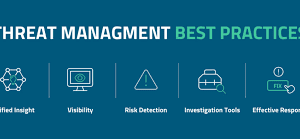As technology advances, organizations are always looking for new ways to make things run smoother. Enter the Software-as-a-Service Learning Management System (SaaS LMS), a great resource for organizations that want to ease IT headaches and cut training costs. A SaaS LMS features a cloud-based architecture that delivers a wide range of flexibility, scalability, and cost savings that companies can leverage to make the most of their training programs.
Simplifying IT Management
Despite the operation of IT infrastructure being an enormous headache for most organizations out there, traditional learning management systems also require a lot in terms of resource allocation for installation, maintenance, and upgrades. On the other hand, a SaaS learning management system removes those burdens since the software is hosted in the cloud. By doing so, there is no requirement for on-premise servers, which means a reduction in IT management burden and allows the IT team to focus on more strategic initiatives.
Additionally, these implement updates and improvements automatically, meaning users can always access the latest and greatest features without having to do anything themselves. This seamless procedure minimizes system downtime and increases productivity. A SaaS LMS enables organizations to save their resources by minimizing technical complexities.
Affordable Options for Training
However, these promises are frequently put to the test by budgets and statistics on training. On the one hand, employee development with the right impact is indispensable, while on the other hand, it is difficult to stay within budget in organizations. To address these concerns, a SaaS LMS offers an economical solution for the traditional training process.
Subscription-based pricing models allow businesses to avoid the large initial investments associated with purchasing and maintaining software. A SaaS LMS also has the flexibility to scale with little to no issue, meaning businesses only pay for what they consume and can adopt it when the organization grows or shrinks. This commercial model allows for predictable expenses, facilitating the preparation and management of a budget.
Improving Access and Flexibility
One of the fundamental advantages of a SaaS LMS is the access. Employees can access training materials at any time, wherever they are, and on any device. This flexibility is particularly beneficial if employees are working remotely or if your employees are frequently on the move, as it ensures that there are no interruptions in learning.
Additionally, a SaaS LMS is cloud-based, meaning learners can easily collaborate and communicate. It encourages peer interaction through collaborative discussions, comments, and replies and helps each other learn.
Streamlining Content Updates
Training content needs to be relevant and up-to-date in a rapidly evolving business environment. A SaaS LMS makes it easy to update training content. This allows easy access to updated material as administrators can make edits or additions at any time so that learners always have the latest information.
Such agility is especially useful for industries with ever-changing regulatory requirements like healthcare or finance. Organizations keep content updated so that they are compliant, and employees can understand how to address the changes with confidence.
Enhanced Data Security
When it comes to sensitive information, businesses are still most concerned about data security. One of the advantages of a SaaS LMS is that it usually provides strong security against these issues. Cloud providers secure this important information with strict security policies and processes to encrypt the information and regularly back up the data, among other things.
These are the complying industry regulations. These security features probably ensure that data is also protected. Using a SaaS LMS, organizations can rest assured that their data stays protected and continue to conduct quality training sessions.
Assisting Analytics and Reporting
Evaluating the impact of training programs helps optimize learning outcomes. SaaS LMSs come with smart analytics and reporting features, which provide useful insights about learners and how they are performing with the course content.
Administrators can monitor completion rates, assessment results, and participation, among other metrics. With these insights, organizations can make data-driven decisions to customize training programs as per the needs of the organization. Using analytics, businesses can constantly refine their ongoing training initiatives, which leads to better performance throughout the organization.
Conclusion
At the end of the day, a SaaS LMS is truly the way to go for organizations that want to limit IT headaches, as well as cut down some of the costs associated with training. A SaaS LMS allows businesses to optimize their training programs by reducing IT management, enhancing accessibility, and delivering cost-effective training solutions.
Those are just a few of the crucial benefits that make a SaaS LMS so valuable: the power of centralizing content updates, securing data, and simplifying analytics processes. Amidst a time when versatility and effectiveness are the need of the hour, leveraging a SaaS LMS can be a boon for organizations to flourish well within a highly competitive business ecosystem.



































